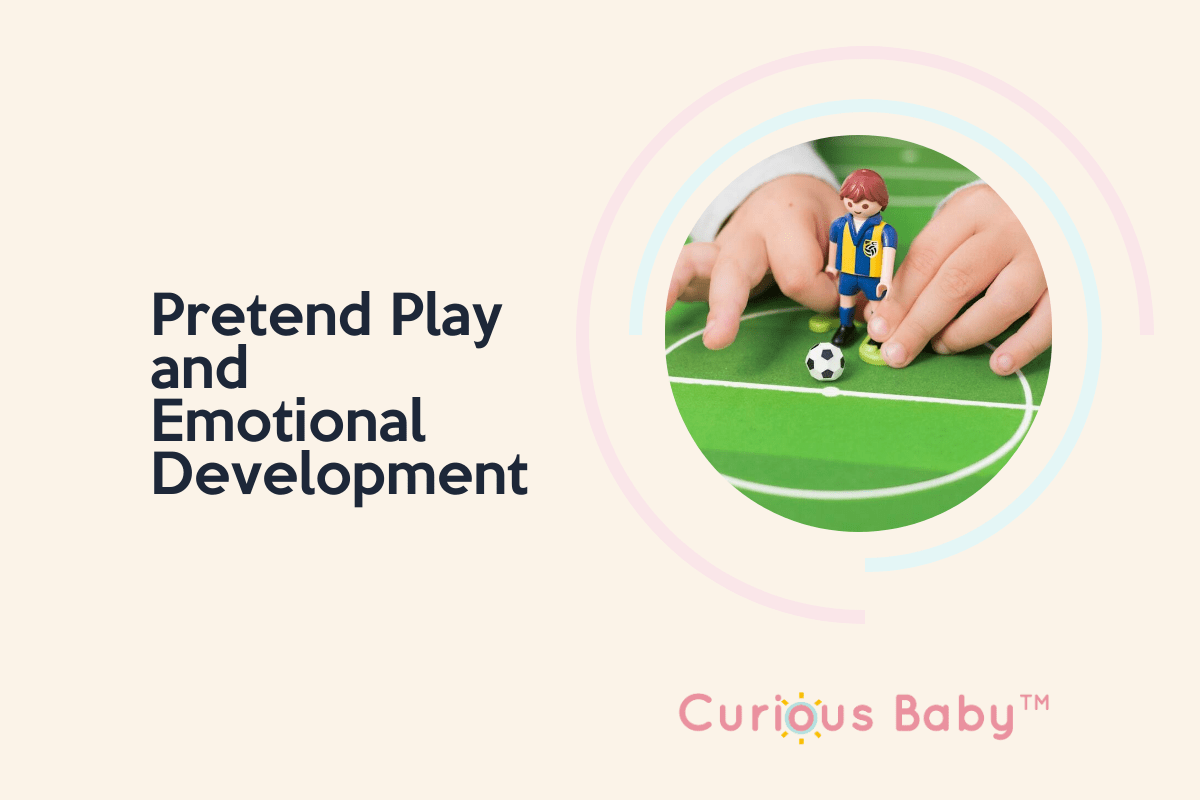We all love to see our little ones begin to play pretend, coming up with scenarios and creating worlds of their own. Playing pretend is one of the leading signs that your child is developing their own imagination. Pretend play often starts small, with your child miming ‘eating’ food or talking to imaginary friends on the phone. Over time, as their ability to pretend strengthens, you may find your little boy or girl pretending to have different occupations, mimicking things Mommy or Daddy do throughout the day, or acting as their favorite book or movie character. Not only is pretend play one of the cutest things ever, but it also helps our children develop in a number of different ways, including fostering and improving social and emotional skills that they’ll need in the future.
At What Age Does Pretend Play Start?
What most people would consider to be pretend play begins as early as 12 months old, with “Pre-pretend Play” starting as soon as 6 months old. The pre-pretend play stage typically involves children watching those around them and then mimicking their facial expressions or gestures. Behaviors that are more commonly thought of as pretend play develop anywhere between one and two years of age and often involve children copying the actions of adults they see around them, whether that be eating and drinking, talking on the phone, or cleaning the house. At this age, pretend actions don’t always follow a logical order, and actions may be repeated.
By the time your little one reaches 24 months old, they’ll be well-practiced in the art of pretending. They may start to pretend with other children and can complete actions in a logical order. Children this age may begin to play with dolls or action figures as if they were alive and will often display ‘scripts’ of actions both inside and outside the home, like going to the grocery store.
By age 3, children begin to integrate ideas they have seen (on television or in movies) but not experienced personally into their pretend play.
At 4 years old, your toddler may begin to introduce a problem into their pretend play. For instance, a doll may be ill, or a car may be broken down. Their play will also get more complex, with children gathering objects for imaginary scenarios before play begins. At age four and above, instances of pretend play can last hours or be picked back up on another day, with detailed plots and subplots. Play at this age often involves other children in the home or school.
Emotional Development Through Pretend Play
One of the key aspects of pretend play is navigating various roles and ‘experiencing’ a variety of different scenarios that are not taking place in reality. This use of imagination helps to develop children’s emotional intelligence from a young age by teaching them how to identify, express, and cope with emotions they may experience.
Pretend play also helps children learn how to identify and empathize with the emotions of others. Learning how to address both their own and others’ emotions gives kids a head-start on understanding how to form relationships in a healthy manner. Stepping into the shoes of another gives children an opportunity to feel compassion for what others may be experiencing while also allowing them to experience some of the complexities of emotions.
Imaginary or pretend play also gives children a way to learn about themselves, what they enjoy and what they don’t, and what they’re good at. Pretend play gives children a chance to express interest in different activities or roles, clueing parents into what their children may have a natural knack for or curiosity about.
Social Development Through Pretend Play
The social aspect of pretend play doesn’t start immediately, and children will mostly engage in pretend play on their own until the age of 2-3. While children 2 years of age and a little younger may be interested in the pretend play of others, they may not fully integrate playtime into a social activity, instead opting to sit next to other children while playing without involving them in the play itself.
As they age, children begin to integrate one another into pretend play. This social aspect of play helps kids learn how to cooperate, communicate, negotiate, and compromise with others of the same age. Taking part in pretend play gives kids first-hand experiences with working through differences of opinion, interpreting the emotions of others, and helping one another when encountering struggles.
Encouraging Pretend Play
The best part about pretend play? Kids have fun doing it! Pretend play teaches children important life lessons without the rules and structure they’ll encounter later in life through schooling. Parents can foster a safe and secure environment where children can engage in pretend play right at home by providing children with pretend play toys (like dolls, cars, pretend kitchen items, etc.) and taking part in playtime activities that encourage imagination, like using the infant learning cards created by Curious Baby.









Leave a comment